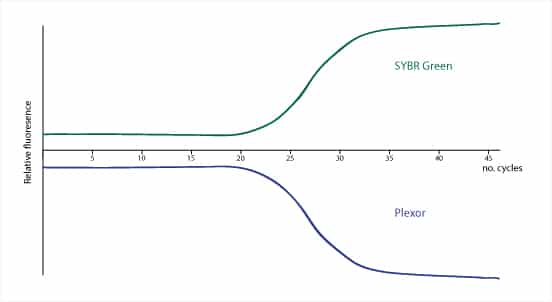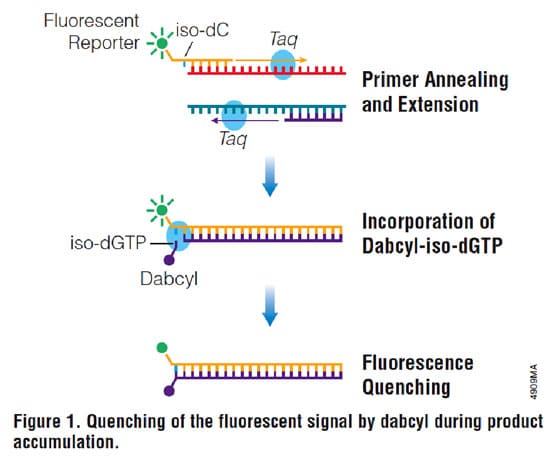What is Touchdown PCR? A Primer and 5 Easy Tips For Success
Got non-specific PCR amplification? You need touchdown PCR! Discover what it is, how it works, and get 5 top tips for performing touchdown PCR.
Join Us
Sign up for our feature-packed newsletter today to ensure you get the latest expert help and advice to level up your lab work.
Search below to delve into the Bitesize Bio archive. Here, you’ll find over two decades of the best articles, live events, podcasts, and resources, created by real experts and passionate mentors, to help you improve as a bioscientist. Whether you’re looking to learn something new or dig deep into a topic, you’ll find trustworthy, human-crafted content that’s ready to inspire and guide you.

Got non-specific PCR amplification? You need touchdown PCR! Discover what it is, how it works, and get 5 top tips for performing touchdown PCR.

Several years ago as a freshman in a research lab, the very first project I received was to pipette incremental micro-volumes of H2O onto a piece of parafilm. Boring! Weighing the liquid on parafilm and comparing the weight between 10 replicates for each micro-volume continued for a week before I touched anything else in that…

Using UNG is a great trick for PCR amplicon decontamination, but is it any good for rtPCR?

PCR is highly sensitive, but the downside of that very property is that it makes the technique prone to producing false-positives. In labs where PCR is a staple, like the one I work in, any false-positives are more often than not due to amplicon contamination. A broken capillary or a PCR plate left carelessly at…

Find out how to build a plate centrifuge using a salad spinner. Gathering the components is as complicated as it gets!

Hydrolysis probes, commonly also referred to as TaqmanTM is a very popular chemistry for real-time PCR. In this article I will compare hydrolysis probes with PlexorTM. But first, a quick overview of hydrolysis probes. Hydrolysis probes, an overview Hydrolysis probes are a popular detection chemistry for monitoring sequence-specific amplification in RTPCR. Just like with SYBR…

In my last article I introduced you to the Plexor System. And from that we already know that while in reactions that user SYBR Green for detection, fluorescence increases with accumulation of PCR product, with Plexor the fluoresence decreases. Today I want to compare some other well-known features of SYBR Green chemistry and see how…

In real-time PCR, there are two primary ways to detect amplicons using fluorescent monitoring. One is intercalator-based dyes such as SYBR Green, and the other is probe-based techniques (hydrolysis or hybridization probes). All of these methods share a similar mechanism of measuring increasing fluorescence during amplification. But there is another completely different way to quantitatively…

Controls are obviously extremely important when setting up experiments. Without them, a meaningful interpretation of the experimental results would be impossible. I say obviously, but in my previous job as a technical services scientist, you’d be surprised at how often I found myself talking to customers about the importance of controls. One customer commented, during…
In my last article, I introduced Cell-Free Protein Synthesis. Today I want to talk about a major bottleneck in in vitro cell-free protein expression; low yield. Most often, paying attention to the important factors such as template purity and design, transcription and translation inhibitors, and potassium and magnesium concentration will solve any problems with low…
Cell-free protein synthesis (aka In vitro translation) refers to protein production in vitro using lysates generated that provide the cellular machinery necessary for synthesis. The lysates can be of bacterial or eukaryotic origin. It is a useful alternative to in vivo synthesis for generating protein for the study of things like: So what are the…

qRT-PCR (quantitative reverse transcription-polymerase chain reaction) is now the gold standard technique for mRNA detection and quantification, sensitive enough to enable quantification of RNA from a single cell. The reverse transcription (RT) step is the main source of variability in a qRT-PCR experiment, so an optimal reverse transcription is essential for a reliable and successful…
Transfection of eukaryotic cells is a routine but sometimes tricky procedure. There are several transfection reagents available on the market, but sometimes the old methods are the best. I find that the simplest, fastest and cheapest transfection method for eukaryotic cells is calcium phosphate mediated transfection (1). It’s main advantage is that, since Ca2+ is…

The eBook with top tips from our Researcher community.